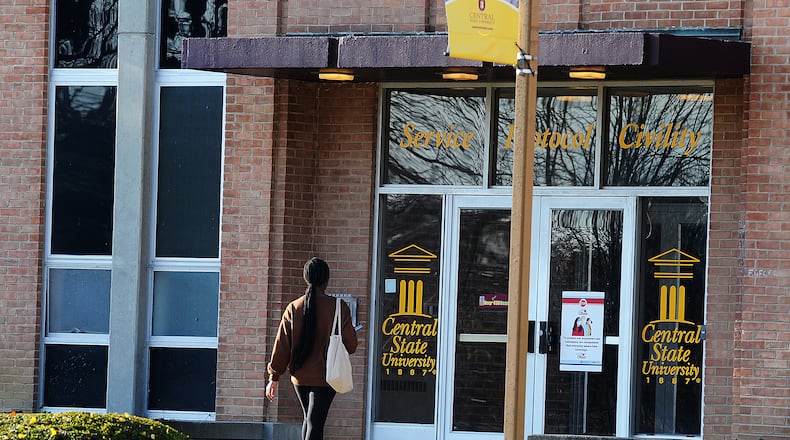For Central State, some of the largest increases in funding have come from federal grants.
During the 2020-21 fiscal year, Central State University, which is public, received $26.7 million in grants and external funding, an increase of over 114% from the previous year, according to the university. It received another $50 million in 2021-22 for an increase of over 137%. Through May of the 2022-23 fiscal year, CSU has earned $34.4 million in external funding.
The total does not include CARES Act funding awarded to universities in response to the COVID-19 pandemic, the university said.
Central State president Jack Thomas said during a June 2 Board of Trustees meeting CSU would be receiving a $2 million gift from Sodexo, a facilities management and catering company.
Wilberforce University received $500,000 from Dominion Energy in 2020, which allowed them to purchase laptops and hotspots for their students. The university was also able to use that money to fund other items, like car repairs for students, said Natalie Coles, former vice president of advancement for Wilberforce. Coles left the university around a month ago but began her work just before the pandemic shut down the world in 2020.
“Those employees the people who worked for these institutions really said we’ve got to do something, and the best way to make change is to continue to invest in education,” Coles said.
Pre-pandemic, Coles said it was difficult to make a case for donations to the historically Black, private university located in eastern Greene County. But Coles said since the protests sparked by the death of George Floyd in May 2020 – more than three years ago – the university has seen a sustained increase in private donor funding. For many companies who gave in 2020, those gifts were negotiated to be given over the long term and the university has built relationships with those companies.
Coles said Black people in spaces of power began to feel able to share the messages of the HBCUs that made them and advocate for their companies to donate to those universities.
Having that support during the pandemic was key to keeping the doors of Wilberforce open during the pandemic, Coles said. The private university does not receive public state funding as Central State does, which is written into state law and guaranteed.
Thomas said private partnerships dramatically increased from just 18 three years ago when he began working at the university to more than 60 partnerships in June 2023. That has allowed students more internship opportunities.
“These partners have helped us in terms of internships and summer jobs, as well as jobs when students finish this institution,” Thomas said at the June 2 meeting. “And I’m very pleased because some students have so many opportunities in terms of internships, they have to choose from among those now.”
Central State has a particularly prominent partnership with Intel, as it is one of seven universities leading the first phase of a $50 million project to train the highly skilled workforce Intel needs for its Licking County factory, which is expected to begin manufacturing semiconductors in 2025, according to the Associated Press. Semiconductors are used in a variety of technologies, including computers, advanced medical devices, military devices and televisions. Central State received about $1.3 million to lead the project.
About the Author

